Address Specific Health Issues Using Innovative UV and Light Products
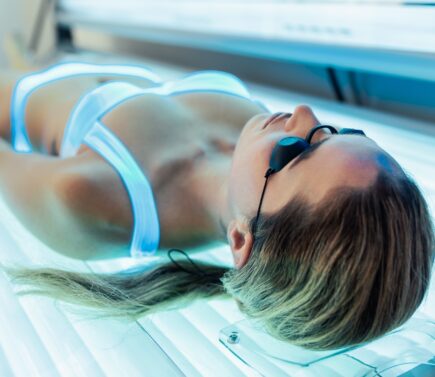
Utilizing new and innovative products allows us to harness the power of specific wavelengths of sunlight to hone in on very specific health conditions
Key Points
- With light therapy services on the rise, we are seeing new spa and wellness salon concepts pop up all over the country. Many tanning salons that traditionally focused only on UV beds are diversifying their offerings to include these new light therapies – but why?
- Red light can reduce the appearance of fine lines, wrinkles, pores, and also reduces muscle and joint pain; blue light can help clear mild to moderate acne; green light and amber light accelerate skin healing, reduce inflammation and even improve skin tone; infrared light promotes detoxification, weight loss, and post-workout recovery
- The benefits of sunshine reach far beyond just UV light and vitamin D production. Utilizing innovative products, such as those described below, allows us to harness the power of specific wavelengths of sunshine and hone in on very specific health benefits.
For our 10th annual Sunshine Month, we’d like to take a deeper look into the growing trend of wellness services that focus on isolating specific wavelengths, or colors, of light to harness their powerful health benefits. With light therapy services on the rise, we are seeing new spa and wellness salon concepts pop up all over the country. Many tanning salons that traditionally focused only on UV beds are diversifying their offerings to include these new light therapies. In 2025, we are also starting to see sunbed technology evolve with new equipment that incorporates a blend of UV and red light, like the KBL K11 Air.
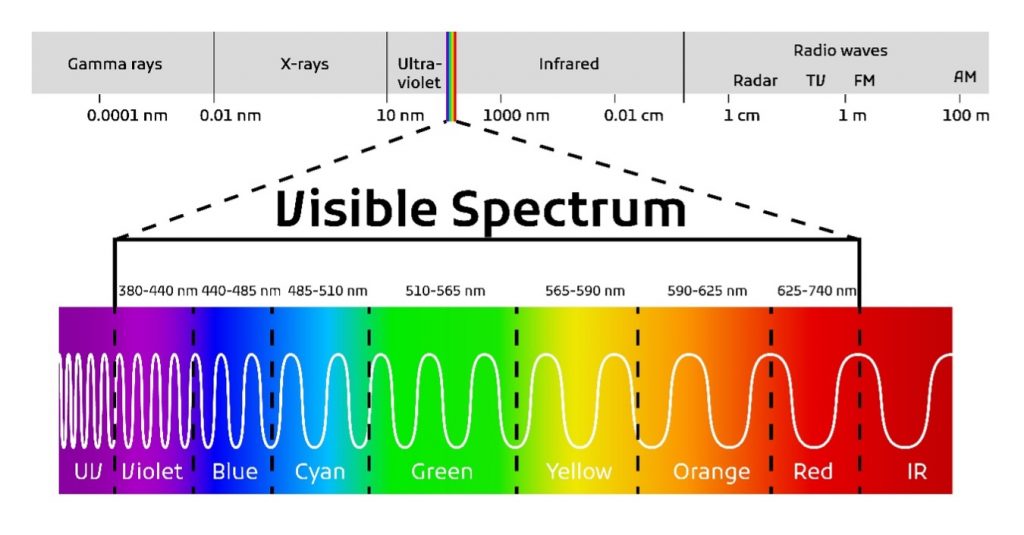
We know that sunlight offers an extensive list of biological and physiological benefits, but what can be gained by isolating or combining specific wavelengths, like red, blue, green, amber and infrared light? Each color offers very specific benefits, and new, innovative products are now making these benefits accessible all year round.
UV Devices for Vitamin D, Immune Benefits
 Both natural and artificial sunlight from indoor UV devices, when used with diligence, can act as major interventional tools to help prevent and heal diseases related to a lack of sunshine and/or vitamin D deficiency. For individuals who do not get enough UVB from sunshine, the regular use of UVB devices can contribute significantly to vitamin D status, as shown in several studies. In fact, according to Dr. Reinhold Vieth,“Sunbeds and summer sunshine are effective means by which to increase our serum 25(OH)D levels. The advantage of a tanning bed is that exposure to UV light can be controlled more precisely than casual sun exposure and thus can be safer than advising the public to guess at their own sun exposure from sunlight.”
Both natural and artificial sunlight from indoor UV devices, when used with diligence, can act as major interventional tools to help prevent and heal diseases related to a lack of sunshine and/or vitamin D deficiency. For individuals who do not get enough UVB from sunshine, the regular use of UVB devices can contribute significantly to vitamin D status, as shown in several studies. In fact, according to Dr. Reinhold Vieth,“Sunbeds and summer sunshine are effective means by which to increase our serum 25(OH)D levels. The advantage of a tanning bed is that exposure to UV light can be controlled more precisely than casual sun exposure and thus can be safer than advising the public to guess at their own sun exposure from sunlight.”
Hot off the Press! An article released this week titled “Surprising Ways That Sunlight Might Heal Autoimmune Diseases” from Scientific American opens with the story of a woman with multiple sclerosis (MS) whose symptoms greatly improved once she began using a UV phototherapy “light box the size of a small space heater.” She called her life after the introduction of the device her “UV-fueled rebirth.” The article then explores emerging research suggesting that UV light exposure may help regulate the immune system and alleviate symptoms of autoimmune diseases such as multiple sclerosis (MS), psoriasis, type 1 diabetes, and Crohn’s disease.
The therapeutic effects of sunlight on conditions like psoriasis have been noted for centuries. Modern science is now uncovering the mechanisms behind these observations, linking UV light to immune system modulation. Epidemiological studies have shown that autoimmune diseases are more prevalent in regions farther from the equator, where sunlight exposure, especially UVB (the vitamin D producing wavelength), is limited.
While vitamin D production is a known benefit of UVB exposure from sunlight, recent research indicates that UV light’s immune-regulating effects extend beyond vitamin D synthesis, involving other skin-derived molecules and pathways, and including those resulting from wavelengths outside of the UV spectrum.
Red Light for Anti-Aging and Pain Relief
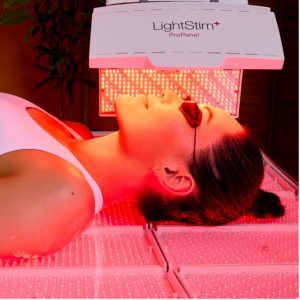 The most popular form of light therapy popping up in recent years is red light therapy. Red light occurs at approximately 620-750nm wavelengths. Red light therapy has multiple proven benefits, the most substantial being reducing the appearance of fine lines, wrinkles and pore size, and reducing muscle and joint pain. How is this possible? Red light stimulates mitochondria, which improves cell function (Javed, Huh 2024). Red light has also been proven to increase full-body circulation and energy levels by jump-starting the production of ATP (Sperling, 2025). For anti-aging benefits, red light panels or masks that only cover the facial area are most common. For pain relief benefits, full-body red light options are most common, which include stand-up booths, lay-down beds, or wall-mounted panels.
The most popular form of light therapy popping up in recent years is red light therapy. Red light occurs at approximately 620-750nm wavelengths. Red light therapy has multiple proven benefits, the most substantial being reducing the appearance of fine lines, wrinkles and pore size, and reducing muscle and joint pain. How is this possible? Red light stimulates mitochondria, which improves cell function (Javed, Huh 2024). Red light has also been proven to increase full-body circulation and energy levels by jump-starting the production of ATP (Sperling, 2025). For anti-aging benefits, red light panels or masks that only cover the facial area are most common. For pain relief benefits, full-body red light options are most common, which include stand-up booths, lay-down beds, or wall-mounted panels.
More and more red light therapy options are becoming widely available, from at-home face masks and handheld devices to professional grade solutions offered in tanning salons and spas. When choosing your red light method, it is critical to pay attention to the power and proximity of light to the body. For anti-aging results, the light source must be placed within 1-2 inches of the skin. For muscle and joint pain relief, the light source must be placed as close to the body as possible in order to penetrate deep enough to reach the muscle. This is why laying on a red light bed is much more effective than standing next to a red light panel hung on a wall. If you are looking to reduce fine lines and wrinkles, it is recommended to apply a facial serum prior to your red light session for the best results. The red light will help any product that is on the surface of the skin absorb and penetrate deeper. Any facial serum with good ingredients that is normally part of your skincare routine will work, or you can find serums formulated specifically for red light, like the California Spa Ageless serum. The Ageless serum contains green algae and plankton extract, which amplifies to effects of red light. A few industry leaders when it comes to red light are the LightStim Propanel, Lightstim LED Bed, and the SmartSun Therapy SST28.
Blue Light for Acne
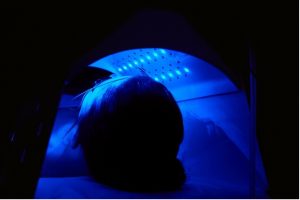 You may have heard about blue light before in the context of your phone or computer screen, but did you know blue light can be a powerful tool in treating acne? Blue light occurs at approximately 440-485nm wavelengths. The main benefit of blue light therapy is clearing and preventing acne. Sounds like a miracle, but how does it work? Most common forms of acne are caused by bacteria that lives on the surface of your skin. This bacterium happens to be very sensitive to blue wavelengths specifically. Exposing acne-prone skin to blue light therapy helps eliminate the acne-causing bacteria to effectively clear current breakouts and prevent new blemishes from forming (Cleveland Clinic, 2021).
You may have heard about blue light before in the context of your phone or computer screen, but did you know blue light can be a powerful tool in treating acne? Blue light occurs at approximately 440-485nm wavelengths. The main benefit of blue light therapy is clearing and preventing acne. Sounds like a miracle, but how does it work? Most common forms of acne are caused by bacteria that lives on the surface of your skin. This bacterium happens to be very sensitive to blue wavelengths specifically. Exposing acne-prone skin to blue light therapy helps eliminate the acne-causing bacteria to effectively clear current breakouts and prevent new blemishes from forming (Cleveland Clinic, 2021).
Just like with red light devices, power and proximity of the light to the skin is key. In order to achieve acne-clearing results, the light source must be placed within 1-2 inches of the skin. With all light therapy, blue light being no exception, repetition and consistency is also a huge factor in achieving your desired results. The more consistent you are with your light therapy routine, the sooner you will see a noticeable difference. To prepare for a blue light session, it is recommended to have a freshly washed face without any skincare products, including serums or moisturizers. Since blue light works to destroy potential bacteria, any sort of product on the skin would act as a barrier to the light, reducing its effectiveness. The industry leader when it comes to blue light is the LightStim Propanel.
Green and Amber Light for Skin Healing
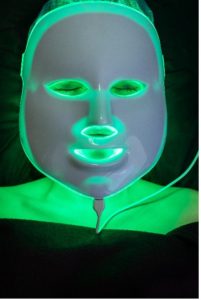 Green and yellow light are not quite as widely known in comparison to red or blue light, especially on a consumer level, but each offer powerful benefits just the same! Green light occurs at approximately 500-570nm wavelengths, and yellow light, more precisely referred to as amber light, occurs at approximately 570-620nm wavelengths. Both types of light offer a multitude of benefits, with the main benefits being accelerating wound healing, reducing inflammation, and evening skin tone (Sperling, 2024). So, how does it work?
Green and yellow light are not quite as widely known in comparison to red or blue light, especially on a consumer level, but each offer powerful benefits just the same! Green light occurs at approximately 500-570nm wavelengths, and yellow light, more precisely referred to as amber light, occurs at approximately 570-620nm wavelengths. Both types of light offer a multitude of benefits, with the main benefits being accelerating wound healing, reducing inflammation, and evening skin tone (Sperling, 2024). So, how does it work?
Green light therapy works by penetrating the skin tissue and stimulating cellular activity that relates to healing and rejuvenation. Green light therapy has also been known to boost collagen synthesis for an overall firmer appearance (Sperling, 2024). Amber light therapy works by stimulating the production of red blood cells, which are particularly helpful for skin healing. With amber light, the star of the show is the 590nm wavelength because of its proven ability to promote cell renewal (Patel, 2024).
It is somewhat rare to see a device that focuses only on amber light. Most often you will find devices that combine amber and another form of light, like red or green. Green light devices are becoming more popular and are available in facial and full-body options.
Infrared Light for Detoxification and Weight Loss
Going beyond the visible spectrum of light, we reach infrared light. Infrared light is invisible to the naked eye but produces heat, so while you can’t see the light, you should be able to feel the warmth! There are two main types of infrared light, near infrared, which occurs at approximately 750-2500nm wavelengths, and far infrared, which occurs at approximately 2500-30000nm wavelengths. Near infrared light is found just past the visible spectrum, with relatively shorter rays that penetrate the body at a shallower depth, about a few millimeters. Far infrared light has longer rays that can penetrate much deeper into the body, several centimeters reaching muscle and joint tissue (Infraredlighttherapy.org, 2025). The main benefit of near infrared therapy is skin rejuvenation, like cellulite reduction and firming/tightening of the skin. The main benefits of far infrared therapy are detoxification, weight loss, and pain relief.
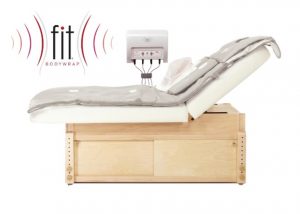 Infrared light therapy has multiple different modalities, like infrared sauna booths, infrared sauna blankets or infrared body wraps. Most people are pretty familiar with sauna rooms or sauna booths. There’s a good chance you’ve tried one before or at least seen one at your gym. Traditional infrared sauna booths work by emitting far infrared light into an enclosed space, which heats up the surrounding air and eventually your body. Infrared sauna blankets or infrared body wraps look sort of like sleeping bags and offer a more intense experience than a traditional sauna. These work the same way as sauna rooms, but rather than heating the air in the room, they heat your body directly. Why is an infrared body wrap so much more effective than a traditional sauna? You may have guessed it… the close proximity to the light source to the skin!
Infrared light therapy has multiple different modalities, like infrared sauna booths, infrared sauna blankets or infrared body wraps. Most people are pretty familiar with sauna rooms or sauna booths. There’s a good chance you’ve tried one before or at least seen one at your gym. Traditional infrared sauna booths work by emitting far infrared light into an enclosed space, which heats up the surrounding air and eventually your body. Infrared sauna blankets or infrared body wraps look sort of like sleeping bags and offer a more intense experience than a traditional sauna. These work the same way as sauna rooms, but rather than heating the air in the room, they heat your body directly. Why is an infrared body wrap so much more effective than a traditional sauna? You may have guessed it… the close proximity to the light source to the skin!
When preparing for an infrared body wrap or infrared sauna session, make sure to wear clothes you are comfortable sweating in. You don’t need to use products to achieve results, but there are several products available to help accelerate and enhance results. For example, the FIT Booster spray, is a fine mist meant to be applied to the entire body prior to an infrared body wrap session. This product creates a barrier on the skin which makes your body work harder to sweat, meaning you burn more calories! The industry leaders for infrared therapy are FIT Bodywrap and HaloSauna (which also features salt for respiratory benefits).
The benefits of sunshine reach far beyond just UV light and vitamin D production. Utilizing innovative products, such as those described above, allows us to harness the power of specific wavelengths of sunshine and hone in on very specific health benefits. Red light reduces the appearance of fine lines, wrinkles, pores, and also reduces muscle and joint pain. Blue light clears mild to moderate acne. Green light and Amber light accelerate skin healing, reduce inflammation and even improve skin tone. Infrared light promotes detoxification, weight loss, and post-workout recovery. No matter what you are seeking benefit-wise, repetition is key! The more consistent you are with light therapy, the better results you will see. Grab a loved-one and celebrate Sunshine Month today by going outside for some free sunlight therapy, or find a light therapy service near you! Check out the links below for more information.
Make Sure You Are Getting Enough of Both Sunshine & Vitamin D
It is important to incorporate safe, sensible sun exposure into a regular routine, just as it is important to make sure you are getting enough vitamin D. Because the sun produces many health-benefiting molecules in addition to vitamin D, sunshine exposure cannot be replaced with taking a supplement.
It is also important not to stop supplementing with vitamin D during the summer. Most people do not make enough vitamin D from sunshine alone, due to their lifestyle and other factors, and therefore must rely on supplementation to maintain optimal vitamin D levels of 40-60 ng/ml (100-150 nmol/L).
SmartTan.com news articles regularly report medical and scientific information to keep you abreast of current events related to UV light. This information is not intended to be used by any party to make unwarranted health claims to promote sunbed usage. Indoor tanning businesses are obligated to communicate a fair and balanced message to all clients about your products and services including the potential risks associated with indoor tanning. Contact your Smart Tan representative to find out more about what you can and can’t say in your tanning salon business.
© 2025 International Smart Tan Network. All rights reserved.
